At Stuart Hall Library we have a great interest in texts and objects that will tell us more about culture and creativity. So we decided to start collecting artists’ books, and have been doing so for the past three years. Some have been donated to us, others have been actively searched for and purchased.
We were impressed and beguiled by the beautiful books on display as part of Iniva’s Peter Clarke exhibition ‘Wind Blowing on the Cape Flats’, and felt inspired to display some of our own artists’ books in the library.
Each book has its own narrative of ideas, influences and processes of production. Much of this remains hidden to the viewer/reader. But we hope that visitors will enjoy the books as objects in their own right, as well as being aware of the power they have to tell a story about a wider artistic practice or project.
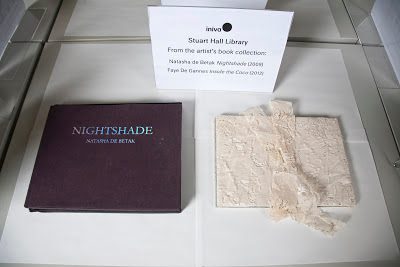
© Christa Holka
Natasha de Betak’s Nightshade is a collection of photographs of individuals at rest, in dream-like poses. The book is hard-bound and made from handmade paper, with its own slip case. It arrived in the post from the artist wrapped in pink and purple tissue paper tied with a black ribbon, like a present.
Alongside Nightshade is Faye De Gannes’ Inside the Coco, which has been discussed previously on the Stuart Hall Library blog. This book, a tribute to Faye’s late mother, is handmade and concertinaed, with lush photography of the countryside in Trinidad.
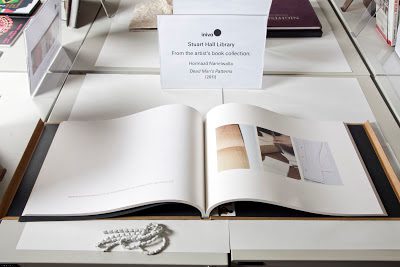
© Christa Holka
Faye had visited the library to gain inspiration from the collection before making her own book. Hormazd Nariewalla ‘s Dead Man’s Patterns (above) is one of the books that caught her eye. The book originates from Hormazd’s residency at a Savile Row tailor’s company.
These books are on open display to enable visitors to handle and explore them, in order to gain a sense of what the artist aimed to achieve.
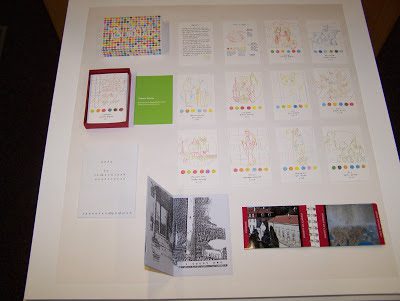
© Christa Holka
Smaller books are on display in our cabinets: My Travel Journal by Yukina Narita is a small box of thirty-four individual cards with illustrations of places visited by the artist. Sofa, by Jessica Jane Charleston is a six-page, black and white photocopied booklet demonstrating the simple but effective aesthetics of a zine. Paul Salt’s River Thinking: Prague One Year After the Floods of August 2002 reflects his interest in environment and landscape.
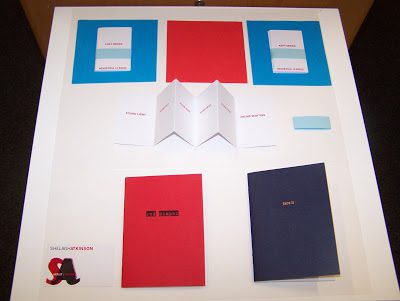
© Christa Holka
Shelagh Atkinson’s Lost, Found and Kept series of ‘6-fold’ small books are exploring, in her words, ‘the playfulness of the English language’, using red print in ’12-point Helvetica bold, a typeface that wants to be read, neutral and functional’. Red Diaper ‘explores the twin themes of identity and relationship through text and imagery’, while Face It documents ‘thoughts and ideas testifying to the imperfect beauty of the human’.
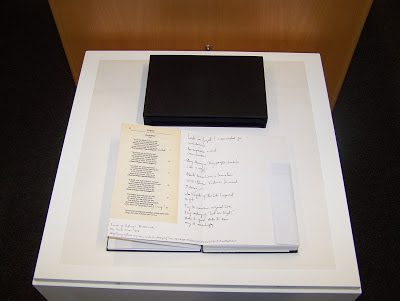
© Christa Holka
Leo Asemota’s Testimony is part of a bigger project, The Ens Project, which is ‘informed by the Igue ceremony to the Head practiced by the Edo people of Benin City, the Victorian age of invention, exploration and conquest and Walter Benjamin’s seminal treatise on art in the technological age’. The book, A5 and concertinaed in format, has an archival quality, which can be experienced by the beautifully filmed Reading of Leo Asemota’s Testimony by Brendan McGinty in which the viewer watches the book being opened, and the pages turned.
Most artists’ books at the library are not on the open shelves, but visitors are welcome to see them on request.
From the Artists’ Book Collection will be on display until 31 March.
For more information, contact us.